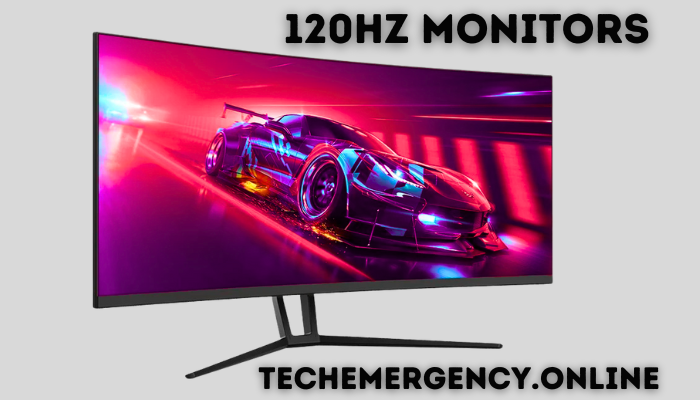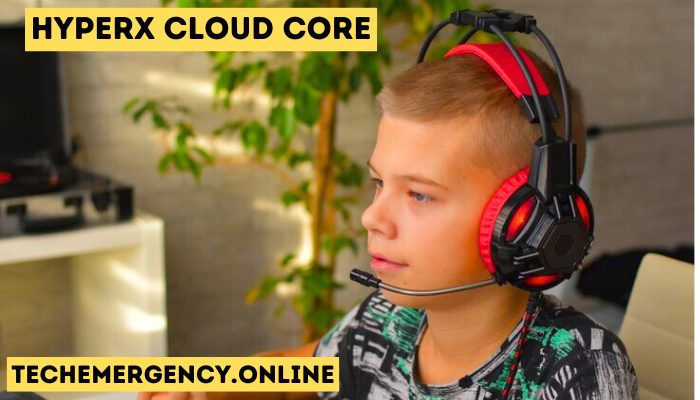Introduction
In the present speedy electronic world, picking the right screen can have a colossal impact you would agree, whether you’re a specialist gamer, content producer, or someone who just values smooth visuals. A 120Hz monitor is a notable choice for some given its supervisor stimulation rate, which thinks about smoother development and decreases screen tearing. In this outrageous associate, we will explore all that you need to know about 120Hz monitors, including their specifics, potential gains and disadvantages, and the best models that anybody could expect to see in 2025.
What is a 120Hz Monitor?
A 120Hz monitor implies the screen’s empower rate, meaning it restores multiple times each second. This is especially advantageous for clients who request rapid visual execution, like gamers or video editors. A higher revive rate means smoother visuals and less movement obscure, making it a well-known decision for a scope of exercises, from gaming to general mixed media utilization.
Why Choose a 120Hz Monitor?
- Enhanced Gaming Performance
For gaming fans, a 120Hz monitor offers a smoother and more responsive gaming experience. With a quicker revive rate, activities are delivered more smoothly, further developing response times and giving an upper hand in speedy games. - Improved Video Playback
High edge rate recordings, for example, those in 4K, look fundamentally better when played on a 120Hz monitor. Whether watching motion pictures or streaming substance, the perfection and clearness are unrivaled. - Better Multitasking and Productivity
Indeed, even beyond diversion and gaming, 120Hz monitors further develop efficiency. Looking at archives or perusing the web feels a lot of smoother, decreasing strain and exhaustion on the eyes.

Key Features of 120Hz Monitors
When looking for the best 120Hz monitor, there are several important features to consider:
- Resolution
A higher goal implies more honed pictures. Typical objectives for 120Hz screens consolidate Full HD (1920×1080), Quad HD (2560×1440), and 4K (3840×2160).The decision rely upon your inclination for picture lucidity and the capacities of your framework. - Panel Type
- IPS (In-Plane Switching): Offers better variety exactness and review points, making it ideal for imaginative work like photograph altering or plan.
- TN (Twisted Nematic): Known for quicker reaction times yet more unfortunate variety proliferation and survey points.
- VA (Vertical Alignment): Finds some kind of harmony between the two, with more profound blacks and great difference proportions.
- Response Time
This alludes to how rapidly the pixels change tone and is estimated in milliseconds (ms). A quicker reaction time (1ms to 4ms) is great for gaming, as it limits movement obscure. - Connectivity
Search for a screen with numerous network choices like HDMI, DisplayPort, and USB-C for simple similarity with different gadgets. - G-Sync and FreeSync Support
These advancements sync the monitor’s revive rate with your GPU’s edge rate, assisting with diminishing screen tearing and stammering, upgrading the general gaming experience. - Ergonomics
A decent 120Hz monitor ought to have ergonomic changes, like slant, turn, level change, and turn, to guarantee you have a happy with survey insight.

Top 120Hz Monitors in 2025
Here are some of the best 120Hz monitors available in 2025:
- ASUS TUF VG259QM
- Specifications:
- Panel Type: IPS
- Resolution: Full HD (1920×1080)
- Response Time: 1ms
- G-Sync/FreeSync: Yes
- Connectivity: DisplayPort 1.2, HDMI 2.0
- Features: ASUS Extreme Low Motion Blur (ELMB), HDR10 support
- Pros:
- Excellent color accuracy
- Fast 1ms response time
- Smooth motion with ELMB technology
- Good for gaming and productivity
- Cons:
- Low resolution for users who prefer 1440p or 4K
- May require color calibration for more professional work
- Acer Predator XB273U
- Specifications:
- Panel Type: IPS
- Resolution: 2560×1440 (Quad HD)
- Response Time: 1ms
- G-Sync/FreeSync: G-Sync
- Connectivity: DisplayPort 1.4, HDMI 2.0
- Features: 1000 nits peak brightness, 98% DCI-P3 color gamut
- Pros:
- Exceptional color accuracy
- High brightness for HDR content
- Low latency for competitive gaming
- Cons:
- Expensive
- Limited to 1440p resolution
- Samsung Odyssey G7
- Specifications:
- Panel Type: VA
- Resolution: 2560×1440 (Quad HD)
- Response Time: 1ms
- G-Sync/FreeSync: G-Sync, FreeSync Premium Pro
- Connectivity: DisplayPort 1.4, HDMI 2.0
- Features: Curved 1000R screen, HDR600, 240Hz refresh rate
- Pros:
- Immersive curved design
- Great for gaming with high refresh rate and fast response time
- Excellent contrast ratio and deep blacks
- Cons:
- VA panels may have lower color accuracy
- Price may be too high for some users
- BenQ EX2780Q
- Specifications:
- Panel Type: IPS
- Resolution: 2560×1440 (Quad HD)
- Response Time: 5ms
- G-Sync/FreeSync: FreeSync
- Connectivity: DisplayPort 1.2, HDMI 2.0, USB-C
- Features: Built-in speakers, HDRi technology, 95% DCI-P3 color coverage
- Pros:
- Great balance between gaming and multimedia use
- Excellent color accuracy for creators
- Good built-in sound system
- Cons:
- Higher response time (may not be ideal for pro gamers)
- Not as good for darker environments (compared to VA panels)
- Gigabyte G32QC
- Specifications:
- Panel Type: VA
- Resolution: 2560×1440 (Quad HD)
- Response Time: 1ms
- G-Sync/FreeSync: FreeSync Premium
- Connectivity: HDMI 2.0, DisplayPort 1.2
- Features: 1500R curved screen, 165Hz refresh rate, HDR support
- Pros:
- Great for immersive gaming experience with curvature
- Solid performance for the price
- Affordable for a 1440p monitor with a high refresh rate
- Cons:
- VA panels don’t have the best color accuracy
- Limited HDR performance
How to Choose the Best 120Hz Monitor for You
When choosing a 120Hz monitor, consider your primary use case:
- Gaming: In the event that you’re a gamer, settle on a screen with a quick reaction time (1ms) and support for FreeSync or G-Sync. A high revive rate joined with these elements will lessen tearing and information slack.
- Productivity/Multitasking: On the off chance that you anticipate involving the screen for work or content creation, an IPS board with exact tones and great survey points is critical.
- Media Consumption: For watching motion pictures or altering recordings, a higher goal (1440p or 4K) and a great variety of multiplication will upgrade the experience.
Conclusion
A 120Hz monitor offers a brilliant equilibrium of execution, perfection, and clearness, making it an optimal decision for gamers, content makers, and ordinary clients. With the right determinations and highlights, you can upgrade your efficiency, appreciate smoother gaming, and raise your interactive media utilization. Examine your necessities and pick a screen that obliges your way of life, and you’ll encounter a gigantic improvement you would concur.




